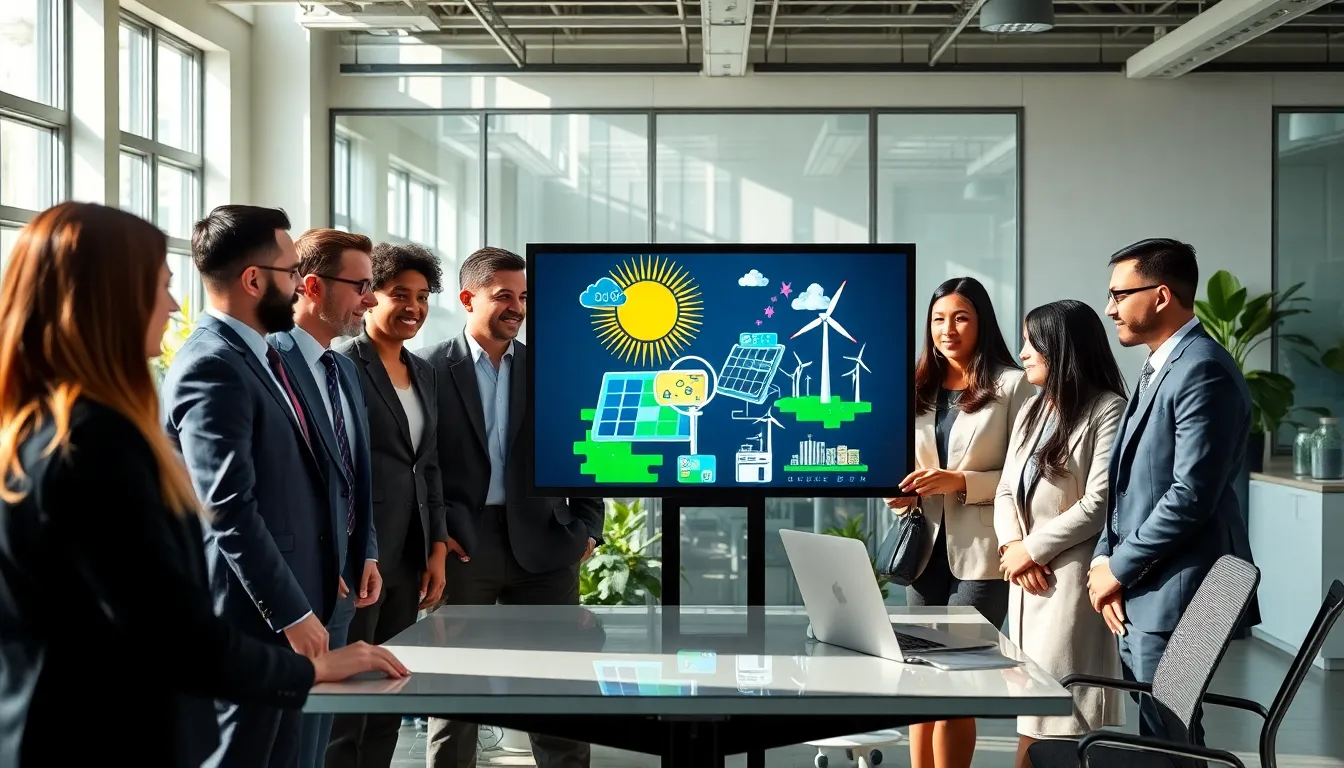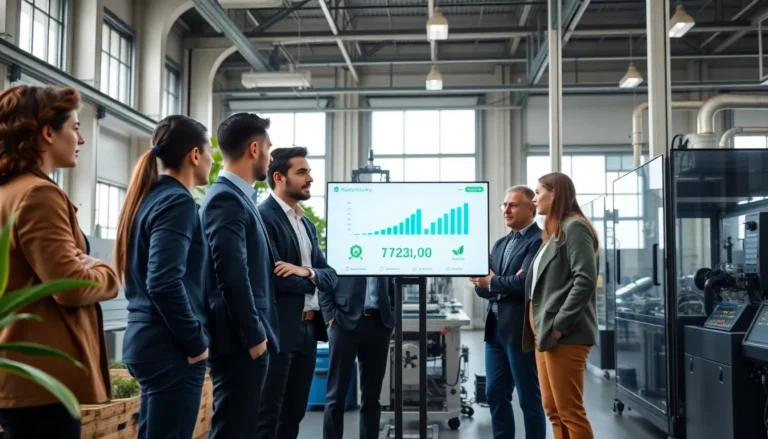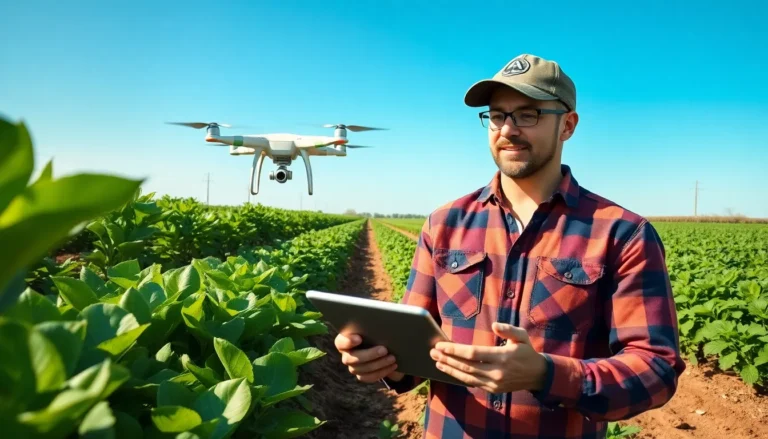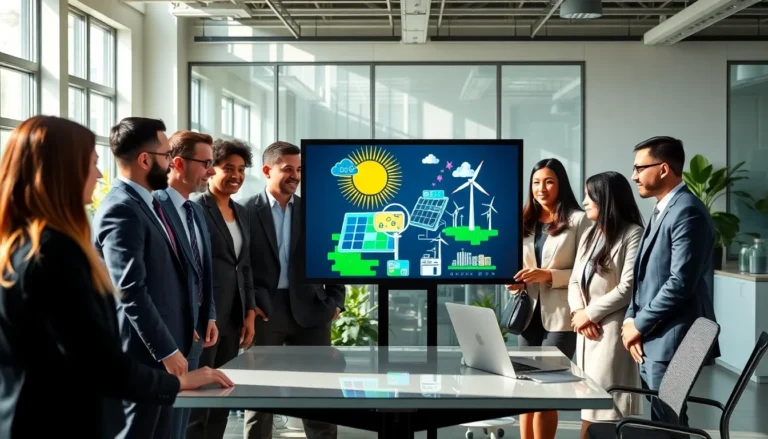Table of Contents
ToggleIn a world where technology seems to advance at breakneck speed, it’s easy to overlook the elephant in the room: Mother Earth is waving frantically for help. What if we told you that the solution doesn’t lie solely in the latest smartphone? Enter sustainable technology solutions, the superheroes of the modern age, saving the planet one innovation at a time. If you’re curious about how tech can be eco-friendly without sacrificing functionality, hang tight, this journey through the green tech revolution is bound to be entertaining and enlightening.
Understanding Sustainable Technology
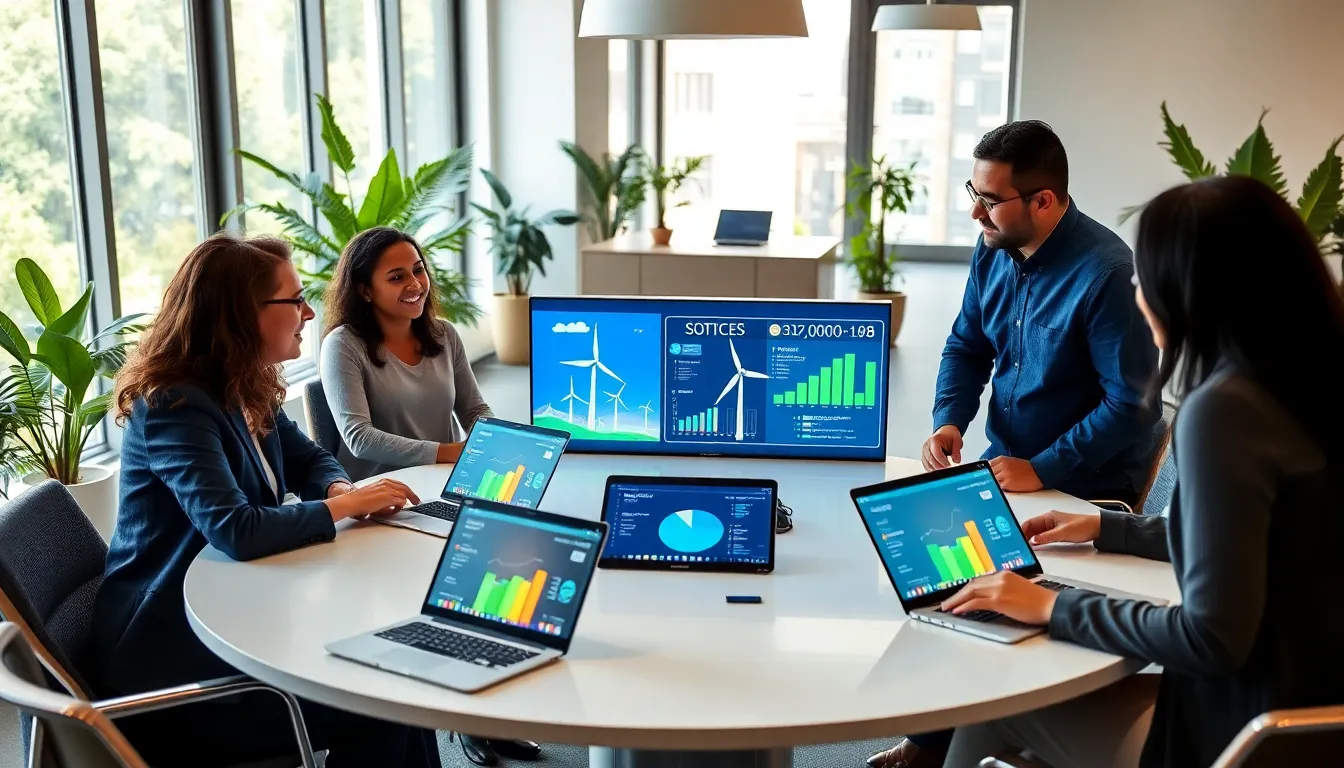
Sustainable technology refers to innovations that contribute to a more sustainable future. But what does that mean in layman’s terms? These technologies aim to reduce environmental impact while meeting present needs without compromising the ability of future generations to meet theirs. Essentially, it’s about integrating environmental stewardship into the heartbeat of technological development. Imagine a world where the latest advancements don’t lead to landfill disasters or toxic waste, that’s the path sustainable technology is paving.
The Importance of Sustainability in Technology
Why focus on sustainability? Picture this: every electronic gadget, every app, every cloud service requires resources, often at the expense of the planet. As global populations grow, the demand for energy and materials skyrockets, leading to resource depletion and environmental degradation. By prioritizing sustainability, companies not only enhance their brand image but also fulfill a social responsibility to the planet. It’s a win-win. They can cut costs long-term through energy efficiency, mitigate risks related to resource scarcity, and appeal to an increasingly eco-conscious consumer base. Simply put, sustainability in technology is no longer optional: it’s essential.
Key Sustainable Technology Solutions
Renewable Energy Technologies
At the forefront of sustainable tech are renewable energy technologies. Think solar panels and wind turbines, these powerhouses harness nature’s resources, reducing reliance on fossil fuels. Not only do they lower greenhouse gas emissions, but they’re also becoming more cost-effective each year.
Energy-Efficient Products
Then there are energy-efficient products, from appliances to light bulbs. These devices use significantly less energy than their traditional counterparts, leading to lower utility bills and a reduced carbon footprint. As energy efficiency standards become stricter, manufacturers are innovating rapidly to meet these demands.
Sustainable Manufacturing Practices
Next up, sustainable manufacturing practices are transforming how products are created. Practices such as using recycled materials, reducing waste, and cutting down on water usage help companies decrease their environmental impact. Many brands now emphasize ethical sourcing and production, ensuring every step, from conception to delivery, is kind to the Earth.
Circular Economy Practices
Finally, circular economy practices aim to redefine growth. Instead of traditional linear models, which often result in waste, circular economies advocate for reusing, recycling, and refurbishing products. This not only conserves resources but also creates a more sustainable business model.
Impact of Sustainable Technology on Business
The ripple effect of adopting sustainable technology solutions on businesses is profound. Companies that embrace these solutions often enjoy enhanced brand loyalty, as consumers increasingly prefer businesses that demonstrate environmental responsibility. Besides, integrating sustainable tech can lead to operational efficiencies and cost savings, manifesting in lower energy bills and less waste disposal expenditure. Competitive advantage is another perk, as companies leading the way in sustainable technologies often set industry benchmarks, attracting both customers and investors keen on supporting eco-Friendly practices.
Challenges in Implementing Sustainable Technologies
Even though the clear benefits, obstacles loom large for companies looking to integrate sustainable technology. High initial costs often deter businesses from making the leap. According to recent studies, many organizations struggle to justify the investment without immediate returns. Also, supply chain complexities and the lack of infrastructure to support new technologies can create bottlenecks. Finally, some companies might face resistance internally, as employees may be reluctant to change established practices. But, through education and gradual implementation, these challenges can be surmounted.
Future Trends in Sustainable Technology
As the world marches deeper into the 21st century, several trends in sustainable technology are beginning to emerge. The rise of smart cities integrating IoT devices for efficient resource management is one noteworthy development. Another is the increased focus on carbon capture technologies aimed at mitigating climate change. Besides, advancements in bioplastics and sustainable materials are promising new avenues for reducing dependence on conventional plastics. As public awareness grows, so too will demand for innovative, eco-conscious technologies.

